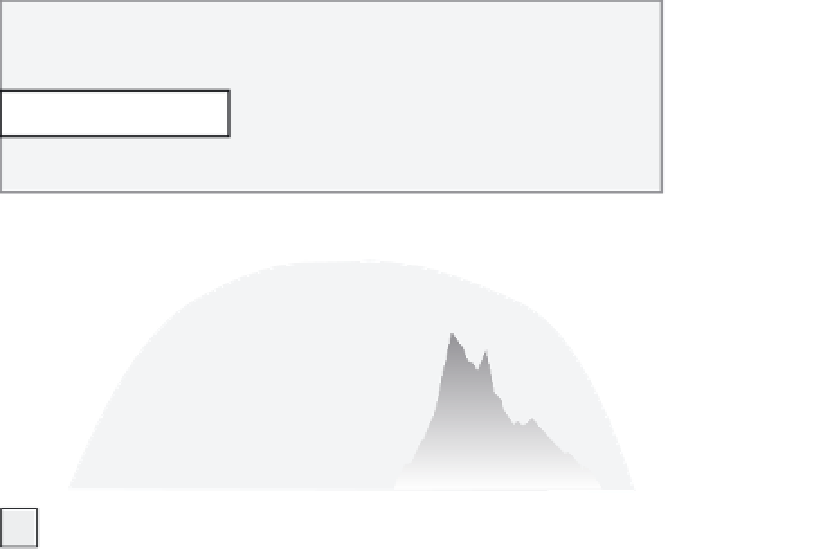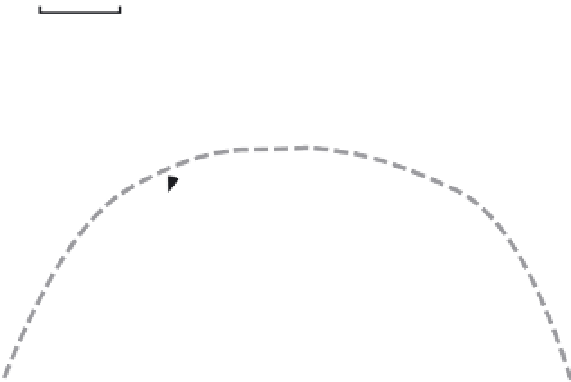Geology Reference
In-Depth Information
Interacting
Fault System
D
max
d
0
1
2 km
c
b
A
a
(1) summed
displacement
for all mapped
scarps
(2) total displacement,
(3) theoretical
100
including tilting
displacement
90
(4) displacement
due to
tilting
80
70
60
50
c
40
d
a
b
30
individual
faults
20
10
0
0
1000
2000
3000
4000
5000
6000
7000
B
Distance (m)
Fig. 4.14
Map of a zone of related normal faults.
A. The fault zone consists of four overlapping major faults (labeled “a”-“d”) and more than 20 lesser faults. These
faults cut the 0.77 Ma Bishop Tuff in east-central California. All of the faults are displaced down to the east, and some
tilting of the original surface also occurs between the faults. B. Displacement versus distance along the fault zone.
Thin lines show the displacement attributed to individual faults. The difference between the dashed lines equates to
the contribution of tilting (up to 30%) to the total displacement. Note the broadly bow-shaped displacement along the
total fault zone. A slip deficit occurs between faults “b” and “c”, but none is apparent between faults “a” and “b” or
between “c” and “d”. Modified after Dawers and Anders (1995).
examples support this competition model
(Gupta
et al.
, 1998; Cowie
et al.
, 2000).
comprises four major, overlapping fault scarps,
more than 20 subsidiary faults with lesser
throw, and tilted blocks between faults (Dawers
and Anders, 1995). When the displacement
on individual faults and tilted blocks is
summed along the length of the entire fault
zone (Fig. 4.14B), a broadly bow-shaped
displacement gradient emerges. This steady
variation suggests that the whole array of
faults is deforming as if it were a single fault
and that overall displacement is being smoothly
partitioned among multiple structures (Nicol
et al.
, 2006). In addition to the overall pattern
of fault system displacement, three notable
points emerge from this compilation of slip
(Fig. 4.14B). First, tilting can account for up to
30% of the total slip at any one point, such
that off-fault deformation should not be
ignored. Second, slip deficits develop in the
Displacement compensation among
multiple faults
Consider two parallel faults for which the ends
of the faults are not linked, but they do overlap.
Commonly, as the displacement decreases on
one fault, the offset on an overlapping fault
strand increases, such that the net slip across
the overlapping region decreases only slightly
(Willemse
et al.
, 1996). This compensating
behavior can sometimes be more readily
documented in a fault zone comprising
multiple interacting faults and is clearly
illustrated along a 7-km-long, linear zone of
interrelated, overlapping normal faults that cut
the Bishop Tuff (Fig. 4.14A). This fault zone









































































































































































